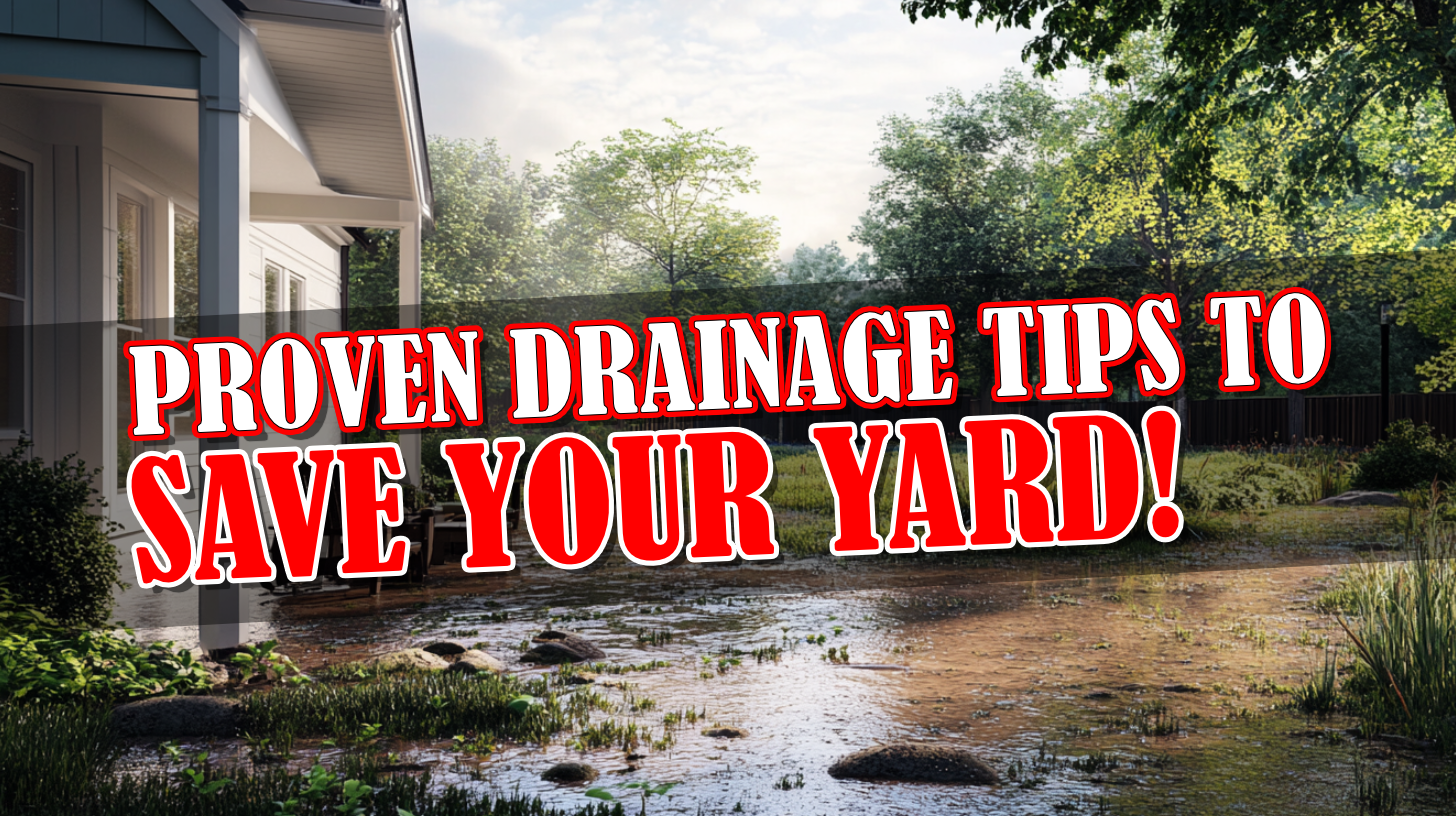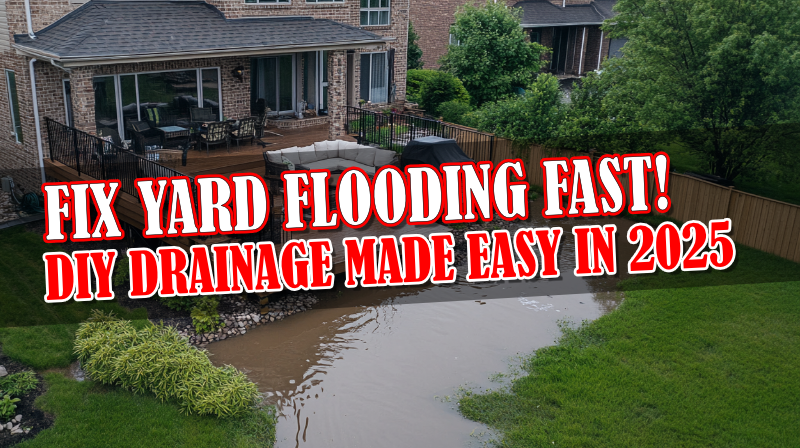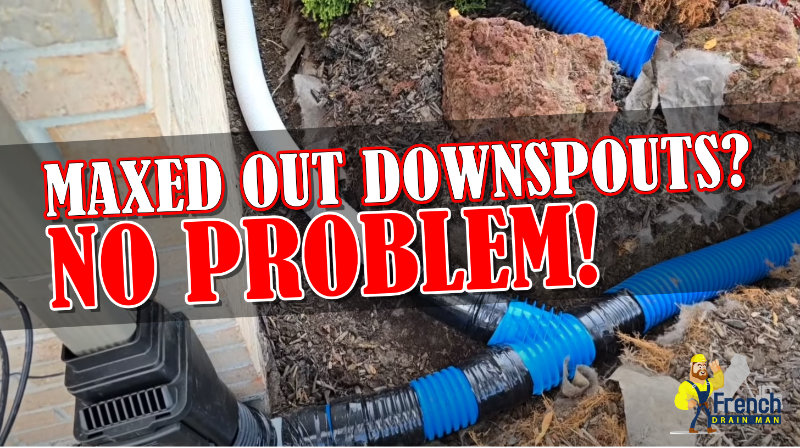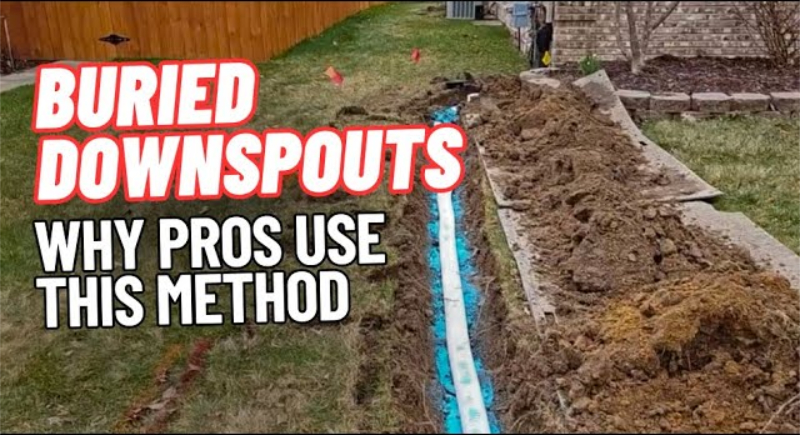How to Dry Up Your Yard – The Right Way
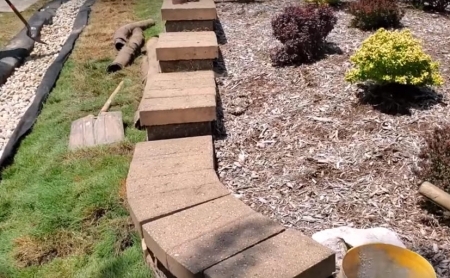 We’re putting in a French drain system here, a yard drain system here. This is going to be handling a lot of water. This retaining wall failed. This is not the first retaining wall. This is the second retaining wall. They keep failing because of how saturated the soils get here in the spring and the fall and it causes the foundation to move, which the whole retaining wall will end up shifting and it’s leaning pretty bad on the other end, I’ll show you that in a minute.
We’re putting in a French drain system here, a yard drain system here. This is going to be handling a lot of water. This retaining wall failed. This is not the first retaining wall. This is the second retaining wall. They keep failing because of how saturated the soils get here in the spring and the fall and it causes the foundation to move, which the whole retaining wall will end up shifting and it’s leaning pretty bad on the other end, I’ll show you that in a minute.
That neighbor’s home, you can see how the roof is. There’s so much roof there and there’s only one gutter downspout. That’s it. So there are just thousands of gallons of water coming down.
Now this driveway slopes and everything’s meant to drain in the back. So, I went ahead and I measured the drive and a good guesstimate on the roof and just a moderate rain event are thousands and thousands of gallons. It’s just insane.
So we’re putting in two pipes here. I think the water is going to come in so fast that we’re going to have to have two pipes so that we have like a reservoir situation
We are putting in the really big aggregate, like an inch and a half aggregate. Scott made a good point. He says, man, it’s like Groundhog’s Day. I mean we just keep digging up garbage systems. There it is another one, that’s a Haviland Drainage, it’s garbage, And never use a pipe with a sleeve sock on it.
You never want to run wrap your pipe and stick it in the ground and then pour a little bit of pea stone on it. That’s what that drain had. It didn’t work.
So you know these retaining walls, they’re thousands and thousands of dollars. So this is the second one and it’s all blown out and all leaning. A lot of times the camera can’t really capture it. It’s leaning and it’s failing.
In a desperate cry to save what they can, they got us in here because the homeowner’s not gonna fix that wall or replace that wall again without going right to the source of the problem. What caused it the fail in the first place.
So we got the inch and a half cobble. This is going to be an open French drain. Right here we’re going to have so much water. We have downspouts running in this direction. The neighbor’s patio in the backyard, it’s all sloped here. This sees so much water. Remember the water up top is coming down here. So this open French drain does a lot of things. One, if this won’t water actually gets moving, which I believe it will. This will act like riprap drainage does. It’ll slow it down. Water has less erosion, it’s less damaging when you slow it down. So but an open French drain, the water just disappears. It hits that and it’s amazing.
This is going to have grass on the top back here. So we are going to do our wrap and then they’re going to go ahead and pin it and lay the sod over it. And then we WYEd the two pipes to one, because I already explained why we have two pipes in there just so that if the system does fall behind, you know it’s acting as a reservoir, you know, having a second pipe in there. We’re going to discharge it right here and so the lawn crews can weed whip and just beat it, beat it up. We’re just going to put a short stick, a schedule 40 in there with a critter guard so no animals crawl up in there and make a home.
So this is what this place needed in the first place for the kind of water they’re dealing with here. And it’s unfortunate that their money was taken repeatedly because whoever put in the retaining wall didn’t understand drainage. And then whoever put in this yard drain system most certainly didn’t understand drainage.
To learn more about yard drains, subscribe. If you’re in southeastern Michigan looking for the service and you just want to keep your hands clean, give us a call at 248-505-3065.





